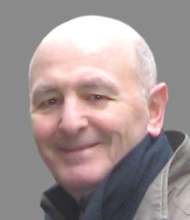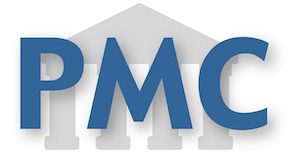
Selected Peer-Reviewed Acupuncture Research
A neuroanatomical basis for electroacupuncture to drive the vagal–adrenal axis.
Systematic Review: Acupuncture vs Standard Pharmacological Therapy for Migraine Prevention. Harvard and Stanford researchers: "There is growing evidence that acupuncture is just as effective and has fewer side effects than many of the standard pharmaceutical agents that are currently used."
Signal Transduction Pathways of Acupuncture for Treating Some Nervous System Diseases. Acupuncture affects synaptic plasticity, causes an increase in neurotrophic factors, and results in neuroprotection, cell proliferation, antiapoptosis, antioxidant activity, anti-inflammation, and maintenance of the blood-brain barrier.
Acupuncture for Chronic Pain: Update of an Individual Patient Data Meta-Analysis. The authors conclude: "Acupuncture is effective for the treatment of chronic musculoskeletal, headache and osteoarthritis pain. Treatment effects of acupuncture persist over time and cannot be explained solely in terms of placebo effects. Referral for a course of acupuncture treatment is a reasonable option for a patient with chronic pain."
Acupuncture for Treatment of Persistent Disturbed Sleep: A Randomized Clinical Trial in Veterans With Mild Traumatic Brain Injury and Posttraumatic Stress Disorder. Real acupuncture, compared with a sham needling procedure, resulted in a significant improvement in sleep measures for veterans with mTBI and disturbed sleep, even in the presence of PTSD. These results indicate that an alternative-medicine treatment modality like acupuncture can provide clinically significant relief for a particularly recalcitrant problem affecting large segments of the veteran population.
Japanese researchers show that electroacupuncture can decrease blood pressure and heart rate.
Characterizing acupuncture stimuli using brain imaging with FMRI - a systematic review and meta-analysis of the literature. Brain response to acupuncture stimuli encompasses a broad network of regions consistent with not just somatosensory, but also affective and cognitive processing. Acupuncture can modulate the activity within specific brain areas. Media Article and Image: Where acupuncture pricks the brain.
Pain and sensory detection threshold response to acupuncture is modulated by coping strategy and acupuncture sensation. The interaction between psychological coping strategy and acupuncture sensation intensity can differentially modulate pain and sensory detection threshold response to EA. In a clinical context, our findings suggest that instructions given to the patient can significantly affect therapeutic outcomes and the relationship between acupuncture intensity and clinical response. Specifically, acupuncture analgesia can be enhanced by matching physical stimulation intensity with psychological coping strategy to acupuncture contexts.
Acupuncture affects skin blood flow and muscle blood volume.
Acupoints Initiate the Healing Process. Needling is the first step of traditional acupuncture therapy. Needling reactions- neuronal, biophysical, and biochemical-are the beginning of healing. The messengers of the three reactions involved may include neurotransmitters, cytokines, hormones, and inflammatory factors. Healing may be potentiated through these messengers in neuronal and humoral pathways. The reactions manifest as erythema and De Qi-both of which are common phenomena used as positive signs in acupuncture treatment.
Systematic review finds acupuncture is helpful in managing symptoms in cancer patients. Acupuncture should be considered for symptom management where there are limited treatment options, using current peer-reviewed guidelines and clinical reasoning.
AcuTrials®: an online database of randomized controlled trials and systematic reviews of acupuncture. The AcuTrials® Database is a comprehensive collection of randomized controlled trials and systematic reviews of acupuncture published in the English language. The database is maintained by the Research Department at Oregon College of Oriental Medicine (OCOM) and is compiled primarily from PubMed, the Cochrane Library and the OCOM library. AcuTrials® is a resource for practitioners, students, and researchers interested in refining searches for specific acupuncture research. Database: https://acutrials.ocom.edu.
Proposed catalog of the neuroanatomy and the stratified anatomy for the 361 acupuncture points of 14 channels. In spite of the extensive research on acupuncture mechanisms, no comprehensive and systematic peer-reviewed reference list of the stratified anatomical and the neuroanatomical features of all 361 acupuncture points exists. This study creates a reference list of the neuroanatomy and the stratified anatomy for each of the 361 acupuncture points on the 14 classical channels and for 34 extra points. This is a step towards western medical standardization of acupuncture points.
Chinese researchers find that acupuncture relieves clinical pain by modulating the brain's default mode network.
Connectomics: A New Direction in Research to Understand the Mechanism of Acupuncture. This paper gives an overview of the application of connectomics in acupuncture research, with special emphasis on present findings of acupuncture and its influence on cerebral functional connectivity.
Evidence Map of Acupuncture. The Department of Veterans Affairs, Health Services Research & Development Service Evidence-based Synthesis Program was established to provide timely and accurate syntheses of targeted healthcare topics of particular importance to VA managers and policymakers, as they work to improve the health and healthcare of Veterans. The ESP disseminates these reports throughout VA. This report provides in-depth information on acupuncture derived from systematic reviews.
Acupuncture modulates the functional connectivity of the default mode network in stroke patients.
Acupuncture, Connective Tissue, and Peripheral Sensory Modulation. Although considerable controversy surrounds the legitimacy of acupuncture as a treatment, a growing literature on the physiological effects of acupuncture needling in animals and humans is providing new insights into basic cellular mechanisms including connective tissue mechanotransduction and purinergic signaling. This review summarizes these findings and proposes a model combining connective tissue plasticity and peripheral sensory modulation in response to the sustained stretching of tissue that results from acupuncture needle manipulation.
Electrical properties of acupuncture points and meridians: a systematic review. Twenty-four articles from twenty-nine studies in publications from 1970 to 2007 were searched to support or refute the claim that acupuncture points or meridians possess distinct electrical properties. The reported electrical associations at acupuncture points include increased conductance, decreased resistance/impedance, elevated capacitance, and higher potential compared to controls.
New findings of the correlation between acupoints and corresponding brain cortices using functional MRI. The results obtained demonstrate the correlation between activation of specific areas of brain cortices and corresponding acupoint stimulation predicted by ancient acupuncture literature.
Analgesic acupuncture effects outlast the needling period. Pain-associated brain areas were modulated in direct response to a preceding acupuncture treatment.
Traditional acupuncture triggers a local increase in adenosine in human subjects.There is increasing evidence that local chemical production of adenosine via connective tissue wrapping around needles is one factor that contributes to the pain relieving mechanism of acupuncture in human subjects.
Neurobiological mechanisms of acupuncture analgesia. Acupuncture has been proven by biochemical, immunohistochemical, molecular biological and neurophysiological investigations. It has been shown that short term acupuncture analgesia is mediated by an activation of endogenous antinociceptive systems and descending inhibitory systems. Long term effects cannot be explained sufficiently by experimental results; however, they suggest an involvement of long term inhibitory synaptic modification at spinal cord neurons and clinical and radiological findings indicate limbic system modulation.












